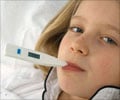Researchers at the David Geffen School of Medicine, University of California, Los Angels and Valencia, Calif.-based Advanced Bionics Corp., trigeminal nerve stimulation (TNS) have developed an alternative to the conventional epilepsy treatment.
It is a nerve-stimulation treatment where in the study and the clinical trails show that it has the potential to control seizures. I this treatment the nerve that prevents seizures is stimulated to inhibit epilepsy. This new treatment is much more effective than those that can be acquired by seizure medication and surgery. The trigeminal nerve extends into the brain from the face and forehead, and is known to play a role in seizure inhibition. The stimulator and electrodes used to transmit an electrical current to the nerve can be worn externally or implanted.A study published in the July edition of the peer-reviewed journal Epilepsia reports that four of seven subjects who used an external stimulator for at least three months in a pilot human clinical trial enjoyed a 50 percent or better reduction in seizure frequency. ‘Most people with chronic epilepsy who have continuing seizures are drug-resistant,’ said Dr. Christopher DeGiorgio, vice chair and professor in residence of neurology at UCLA, and co-developer of TNS and lead author of the study.
In addition, anti-seizure drugs can have significant side effects on behavior, thinking and alertness. Women taking anti-seizure drugs and their unborn children are at special risk because of the effect of these drugs on fetal growth and development. ‘For all of these reasons, we need to find non-drug alternative treatments,’ DeGiorgio said. ‘The results of our pilot study support further investigation into the safety and efficacy of TNS for epilepsy.’ Forty percent of the 2.5 million people in the United States with epilepsy have poorly controlled seizures. Recurrent seizures lead to social isolation, unemployment, inability to drive and injuries from falls and burns, as well as drowning. Approved treatment options include a variety of medications, neurosurgery that involves removing a small portion of the brain responsible for the seizures, and vagus nerve stimulation (VNS).
Despite the introduction of multiple new antiepileptic drugs since the 1990s, as many as one million individuals with epilepsy across the country fail to benefit from drug treatment. While surgery can be effective, many patients are either not ideal candidates or lack access to one of the few specialized epilepsy centers, such as UCLA, where surgery is offered. VNS treatment has helped thousands who could not control their seizures with medication and were ineligible for surgery. TNS, however, holds several potential advantages over VNS, DeGiorgio said. Unlike VNS, the TNS stimulator can be tested externally to gauge results before implanting the device. Patients treated in the clinical trial wore the stimulator on their belt. Wires from the stimulator were passed under clothing and connected to electrodes attached to the face by adhesive. The electrodes could be covered by a cap or hat. In addition, while VNS stimulates only one side of the brain, TNS stimulates both sides, a theoretical advantage that will require more testing to validate and quantify. The cost of an external TNS stimulator is about $180. The monthly retail cost of batteries and electrodes is $150 to $170.
Source Eurekalert









